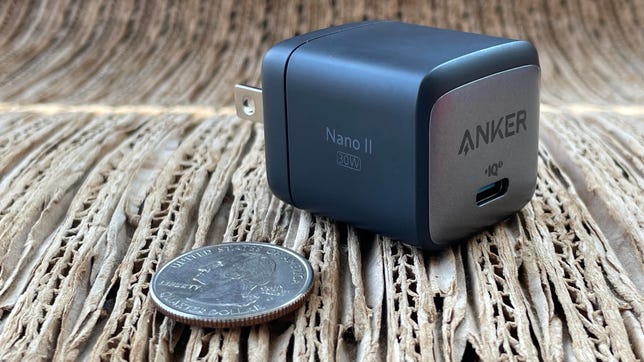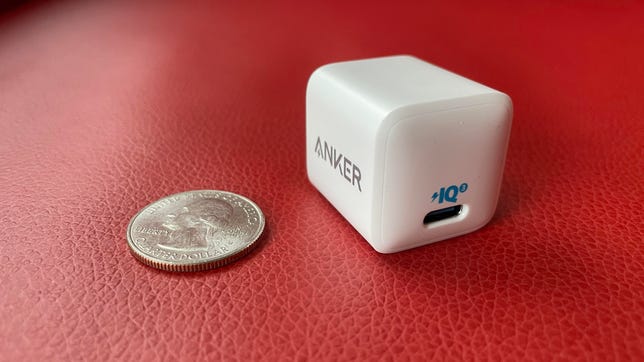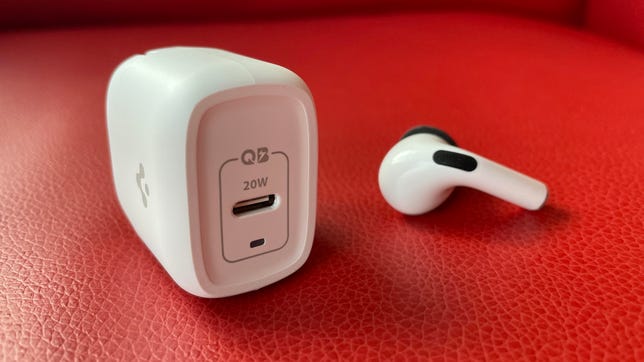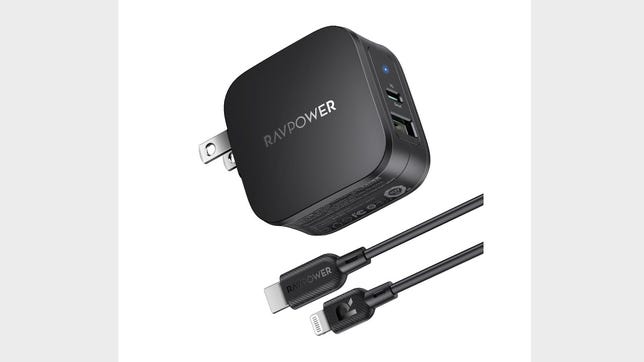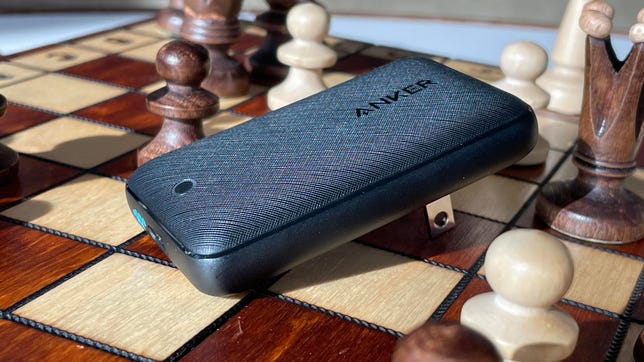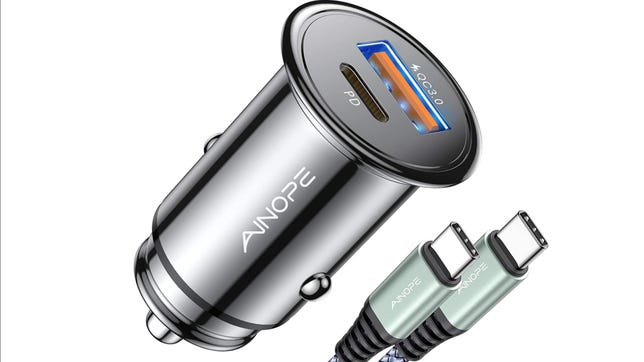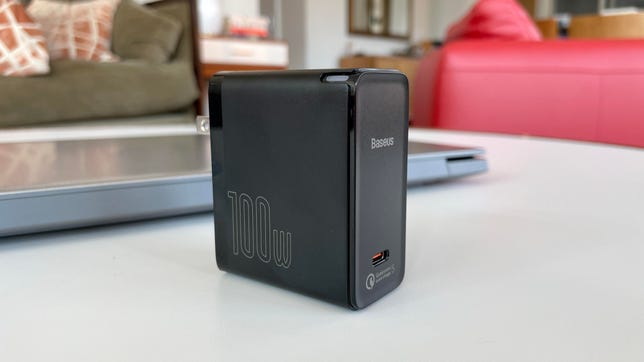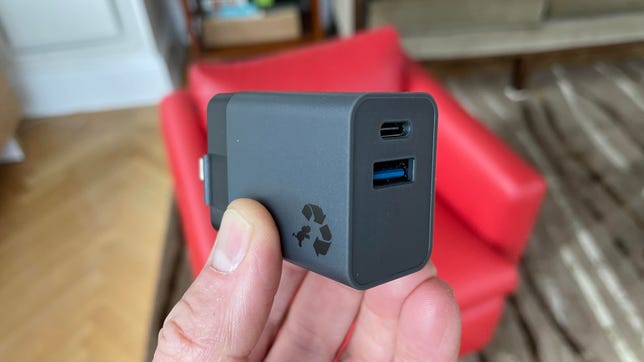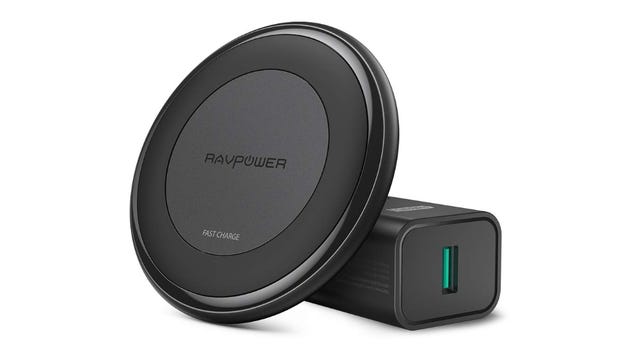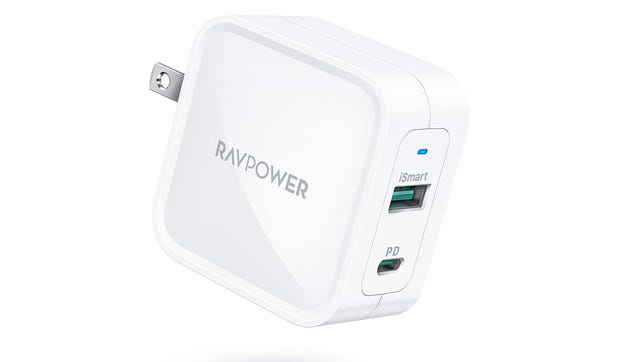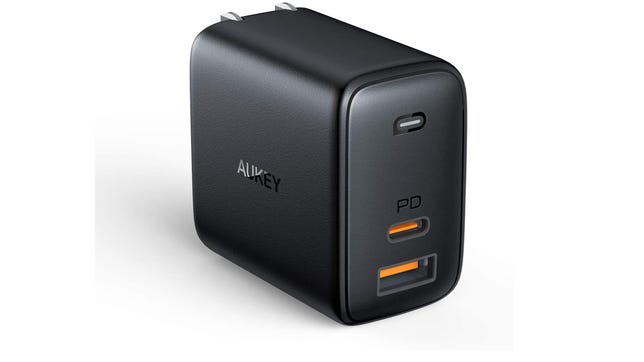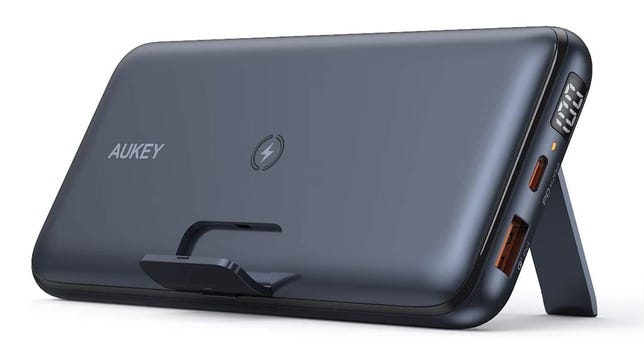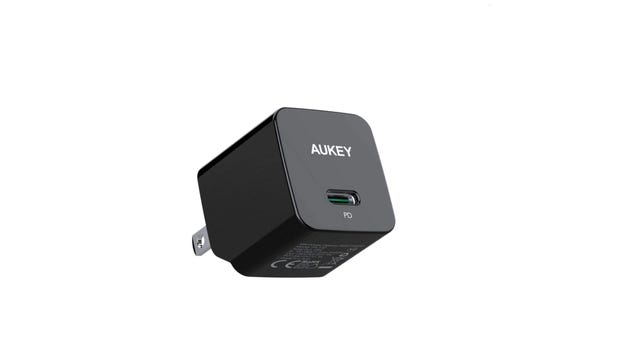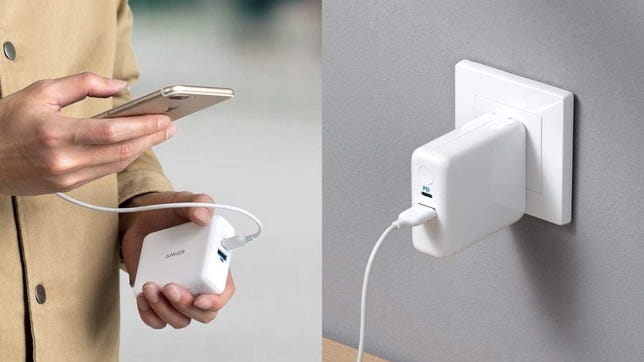Technologies
Best iPhone 14 Fast Chargers at the Lowest Prices We Can Find
With Apple not including a power adapter with any of the iPhone 14 models (or iPhone 13 models), here’s a look at several chargers that will quickly juice up any iPhone.

Every new iPhone might become more advanced technologically, but you don’t get everything you need in the box anymore. It’s a frustrating problem, but one you can easily solve with our guide to the best iPhone 14 fast chargers.
Apple’s 20-watt USB-C power adapter sells for $18, which is about $11 less than its overpriced and discontinued 18-watt USB-C power adapter. But several attractive alternatives can be considered among the best wireless and wired iPhone chargers. We’ve rounded up some of our favorite Apple device chargers to give a boost to your battery life. A few quick ground rules before we start:
- You’ll need a charger with a USB-C port, or you’ll need to get a USB-A-to-USB-C adapter. At the prices below, you might as well just get a new charger for your Apple product.
- Chargers with USB-C or PD (power delivery) support can generally charge devices faster than chargers with USB-A ports.
- Two ports are always better than one, allowing you to charge two phones at once, or a phone and an accessory like wireless headphones.
- Higher wattage is better up to a point. But getting 18 watts or better will allow you to charge tablets and even a Nintendo Switch. Get 65 watts or more and you can charge most newer laptops, too.
- Many of these new chargers use a new, fast semiconductor material called gallium nitride, aka GaN, that is replacing the old, slow, silicon chip. Chargers with «GaNFast» have a charging speed up to three times faster than traditional chargers — and they’rehalf the size and weight. They’re compatible with everything in today’s Apple range, from AirPods and iPhones all the way to the big 16-inch MacBook Pro. They might not be optimal for models older than the iPhone 12, though.
- Every charger here can also juice up an Android phone (so long as you supply a compatible charging cord or USB cable) as well as a Nintendo Switch.
While there are a plethora of charging brands available, including some generic ones on Amazon that offer 20-watt USB-C chargers for as low as $13 for a three-pack, we can broadly recommend three phone-charger brands: Anker, Aukey and RAVPower. All three have similar offerings at similar wattage, and prices fluctuate almost daily. Our latest Apple iPhone favorites are below, including some power bank (battery), wireless, charging stand and car options. We’ve used all of these over the past few months (or their direct predecessors).
None of these incorporate the new Apple MagSafe charger technology — an upgrade from the Lightning connector. That’s brand-new and will have a price premium for the foreseeable future — don’t expect to pay less than $37.
We’ve tested most, but not all, of these chargers with the previous-generation iPhone 12 and iPhone 13. We’ll update this periodically with more current picks for the new iPhone 14 so you can find a great deal on one of the best iPhone charger options you can grab to stay powered up.
Note that in May and June, most RAVPower, Aukey and Mpow products disappeared from Amazon amid reports that the retailer was cracking down on fake reviews. Many of those products remain available at RAVPower.com and Aukey.com, but their prices tended to be a little lower on Amazon.
Read more: Best iPhone 14 Cases So Far
David Carnoy/CNET
The Anker Nano II 30W is a next-generation fast charger powered by gallium nitride technology. It’s about the same size as the original 20W Nano charger but delivers more fast charging power. The Nano II will not only charge your phone but a MacBook Air, iPad and other Apple devices. Anker also sells 45- and 65-watt chargers. Read our first take on Anker’s Nano II chargers.
David Carnoy/CNET
Anker’s Nano is literally the size of old Apple’s 5-watt USB charger that used to ship with iPhones but offers 20-watt charging. Featuring Anker’s PowerIQ 3.0 technology, it charges more than 2.5x faster than that 5-watt charger (with a USB-C-to-Lightning cable). It was recently upgraded from 18 to 20 watts.
Amazon
A GaNFast charger, Spigen’s 20-watt ArcStation Pro is one of the smallest fast-charging USB-C chargers you’ll find. While the Anker Nano is a bit smaller, it doesn’t have a foldable plug like this model. Using a USB-C-to-Lightning cable, it charges close to three times faster than Apple’s standard 5-watt USB charger.
Amazon
This 30-watt, dual-port charger delivers the full 30 watts of juice if used alone and 18 watts if used while charging a second device via the USB-A port, which delivers 12 watts of charging. It’s a GaNFast charger, and it includes a USB-C to Lightning cable. You can save 30% when you use the promo code SPE05 at checkout.
Amazon
This svelte Anker 30-watt charger with foldable plugs is pocket friendly and can charge your iPhone impressively fast with a USB-C-to-Lighting cable. Like many other compact chargers, this uses gallium nitride technology.
Amazon
I originally had an Aukey cigarette-lighter power adapter on this list, but it’s out of stock and this low-profile Ainope mini fast USB Car Charger offers even faster charging (up 24 watts) and costs less. It has both a USB-C and USB-A port so you can charge two devices at the same time, but to get 15-watt wireless charging, you’re going to be better off charging one device.
David Carnoy/CNET
Yes, a 100-watt charger is overkill for charging your phone. But if you want a charger that can charge any USB-C laptop, including the 16-inch MacBook Pro (which happens to be my work computer), the new Baseus 100W GaN II Fast Charger with Qualcomm Quick Charge 5.0 is the latest and greatest high-wattage fast charging USB-C charger. As its name implies, it features GaN II technology. It’s both significantly smaller than earlier 100-watt chargers and more energy efficient, so it doesn’t heat up as much. It adapts to whatever device you’re charging, delivering the highest charging speed that the device is capable of.
David Carnoy/CNET
Nimble is all about making its products from recycled plastics, and not having any plastic in its packaging. Its Wally Mini is a dual-port 20-watt PD charger with fast-charging capabilities. You can charge two devices at once, but to get to top charging speed for your iPhone you’ll need to connect it using a USB-C-to-Lightning cable (to the USB-C port) without having any other devices connected to the USB-A port.
It has retractable prongs, is quite compact and also feels pretty light. If you didn’t know it was made out of recycled plastic, you might not guess that it was. But since I did know, I did think, «Yes, this feels like recycled plastic.» Not that it feels bad, but it does look and feel a little different.
Nimble also includes a bag in the box for your e-waste items. If your old electronics product is on Nimble’s list of approved electronics for recycling, you can print out a free shipping label to send in your gear for recycling.
Amazon
No, this isn’t a fancy new MagSafe charger — but it doesn’t cost $60, either. I like this RAVPower charging pad because it’s relatively inexpensive and comes with a power adapter that allows you to get the faster 10-watt wireless charging speeds (some top out at 7.5 watts, and a lot of cheap wireless charging pads don’t include a power adapter).
Amazon
Another good choice in the best all-around wall charger category is RAVPower’s 65-watt dual-port charger. It’s very similar to the Aukey and often costs within a few bucks of the same price. This is also a GaNFast charger.
Amazon
Another GaNFast charge, this compact 65-watt USB-C charger will not only charge your iPhone at maximum speed (if you spring for a USB-C-to-Lightning cable), it also charges most USB-C charging laptops. Additionally, you can charge a second device via the USB-A port.
Amazon
This Power Bank from Aukey has both wired and wireless charging options. If you use the USB-C port, you can get 18 watts of charging. Go wireless and lay your phone on the charging dock battery and it will wirelessly charge at 10 watts, which is where the iPhone currently maxes out for wireless charging. You’re paying a premium, but this phone charger unit has a massive battery (20,000 mAh), a built-in kickstand and a digital readout listing the remaining charge. It comes with a USB-A-to-USB-C cable, but you’ll need to supply an adapter to charge it.
Amazon
Looking for a compact single-port fast-charger? Aukey has a number of options that won’t put a dent in your bank account.
Amazon
Why carry around both a power adapter and a portable battery when you can have both in one device? We loved the earlier version of this model, and now it’s back with both USB-A and USB-C ports, with power up to 18 watts. Yes, it’s bigger and heavier than most of the power adapters on this list, because it does have that integrated battery.
More iPhone recommendations
- Best iPhone 14 and iPhone 14 Pro Cases You Should Buy Now
- Best Cases for All iPhone 13 Models
- Best Eco-Friendly iPhone 12 and 12 Pro Cases
- Best iPhone in 2023: Which of Apple’s Phones is Right for You?
Technologies
Repair Your Electronics at Home With This Rare Black Friday Discount on the iFixit Pro Tech Go Toolkit
This toolkit rarely goes on sale, so take advantage of this opportunity to snag it for only $40.
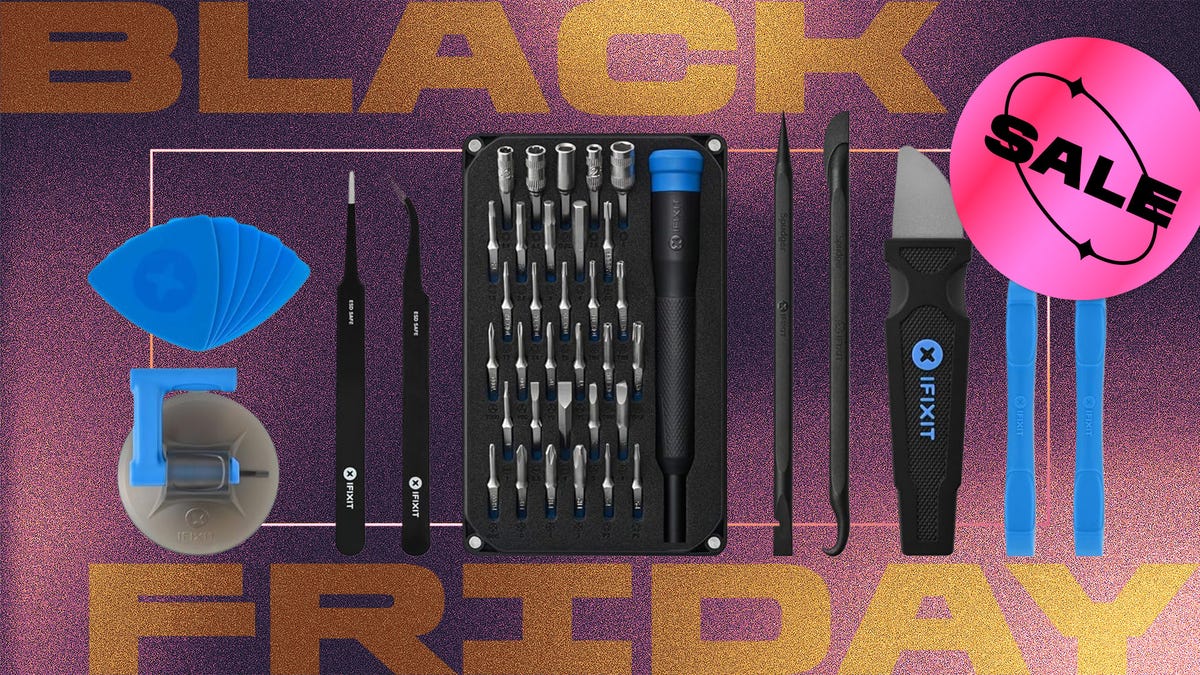
While Black Friday is an excellent time to replace old smartphones or broken laptops at a discount, not everyone is looking to splurge on new tech right now. If you’re shopping on a budget, or simply like the devices that you have and aren’t ready for an upgrade, investing in an electronics repair kit may be a wise option. We’ve spotted a discount on the iFixit Pro Tech Go tech toolkit, bringing its price down to just $40. But don’t delay, Black Friday is in its final hours and this kit rarely goes on sale.
The iFixit Pro Tech Go kit can be used to open up and repair a wide range of electronics, including smartphones, laptops, gaming consoles, and smart home devices for DIY repairs like battery or screen replacements. The kit has a 32-bit Moray driver kit, an opening tool, a suction handle, a jimmy, a spudger and angled tweezer to carefully open your devices.
Don’t miss any of our unbiased tech content and lab-based reviews. Add CNET as a preferred Google source.
Repairing your own tech can save you hundreds or even thousands of dollars. It also reduces e-waste by helping your devices last longer rather than throwing them away over minor issue. As of this year, all 50 states have introduced right-to-repair legislation designed to give people a legal right to fix their own tech, and several states have already signed it into law.
You can check out more deals from iFixIt now on Amazon. Plus, for other budget buys, check out our roundup of the best Black Friday deals under $100.
MOBILE DEALS OF THE WEEK
-
$749 (save $250)
-
$475 (save $175)
-
$499 (save $300)
-
$900 (save $400)
Why this deal matters
This is a record low price on a repair kit that rarely goes on sale. While we did see a modest discount on the iFixit Pro Tech Go toolkit during Amazon Prime Day in July, it was not marked down for October Prime Day or other sales such as Memorial Day or Labor Day. As such, it’s fairly unlikely that we’ll see it go on sale again this season, so this might be your last chance to get the toolkit for only $40.
Join Our Daily Deals Text Group!
Get hand-picked deals from CNET shopping experts straight to your phone.
By signing up, you confirm you are 16+ and agree to receive recurring marketing messages at the phone number provided. Consent is not a condition of purchase. Reply STOP to unsubscribe. Msg & data rates may apply. View our Privacy Policy and Terms of Use.
Technologies
Don’t Say Goodbye to Black Friday Yet. These Rare Apple Discounts Are Still Going Strong
Technologies
What a Ban Would Actually Mean for DJI Drone Owners and Holiday Shoppers
What’s the secret to a very un-merry shopping season? A brand new, unusable drone.
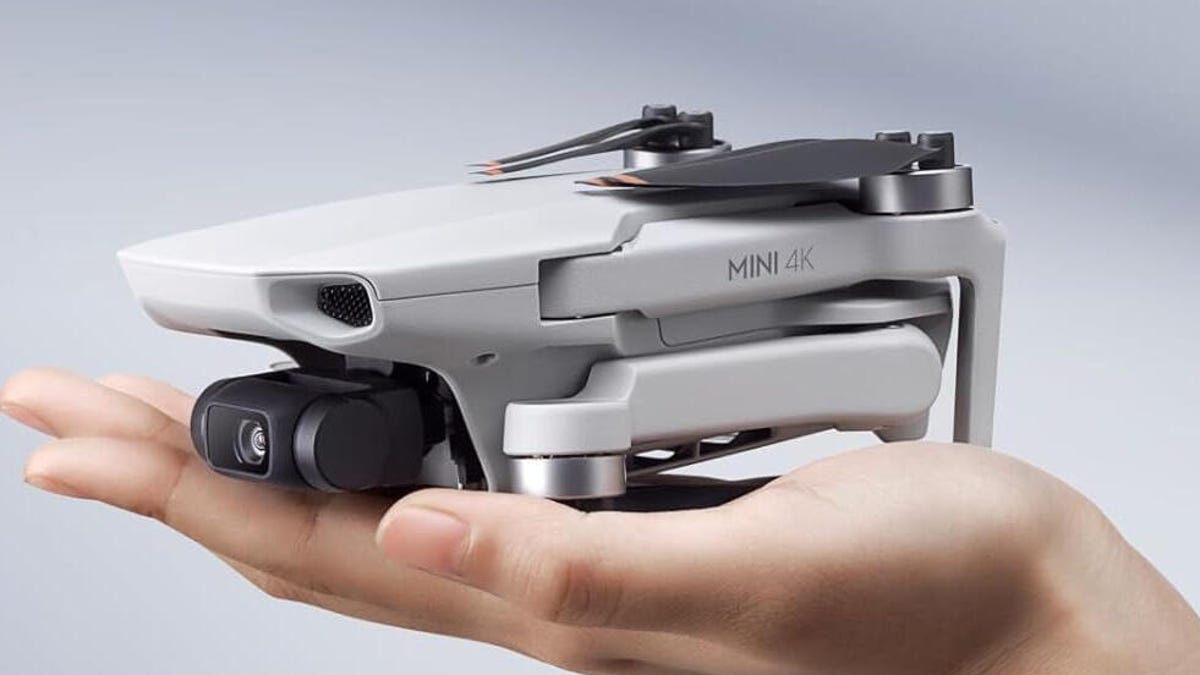
With Thanksgiving wrapped up and the Black Friday shopping sales here, if a DJI drone is on your holiday wish list, you might want to hit «buy» immediately. The company has issued a stark warning: Its drones could be banned from sale in the US, and the deadline is looming.
The Federal Communications Commission voted 3-0 at the end of October to «close loopholes» that allow tech deemed a «national security risk» to be sold in the US. In plain English, the US government is clearing the path to give DJI the same treatment it gave Chinese phone-maker Huawei, effectively banning its products from the American market.
The US government has deemed DJI, which is based in China, a security risk. It’s also considering a separate ban on TP-Link routers.
DJI is already sounding the alarm, posting on Instagram that a «deadline that could decide DJI’s fate in the US is just 43 days away» (now 19 days away). The company is warning that without an audit, its products could face an «automatic ban.» The US government has long labeled the Chinese drone maker a security risk, and it looks like the hammer might finally be coming down right before the holidays.
Don’t miss any of our unbiased tech content and lab-based reviews. Add CNET as a preferred Google source.
The vote isn’t the end of the road, however. Future bans would need to target specific products and would require a period of public consultation. But it appears the groundwork is being set for the FCC to block sales of future and some existing DJI drones from US shores, as well as products that use DJI technology.
The government has called for a DJI audit by the end of the year, but if that doesn’t happen, DJI drone products could be banned for sale by default under a national security law.
DJI asks for a security audit before any ban
A representative for DJI told CNET that while the FCC vote references a rule change that doesn’t currently apply to DJI specifically, the National Defense Authorization Act deadline in December would put Chinese companies like it on the FCC’s ban list, «without any evidence of wrongdoing or the right to appeal.»
Adam Welsh, head of global policy at DJI, said the company has repeatedly said it would be open to audit, but that «more than 10 months have now passed with no sign that the process has begun.»
«The US government has every right to strengthen national security measures, but this must go hand in hand with due process, fairness, and transparency,» Welsh said.
Welsh said DJI is urging the government to start the audit process or grant an extension.
Will DJI drone owners need to give them up?
Because the ban would apply to new sales, not drones that have already been sold, a DJI drone you already own would still be legal to use — at least under current rules.
Government agencies, however, are prohibited from purchasing or using drones from Chinese companies, including DJI.
DJI’s drones consistently rank high in their product category. In January, they dominated CNET’s list of best drones for 2025. But some of the company’s newest products, such as the DJI Mavic 4 Pro, haven’t been available for sale in the United States.
Even DJI products that are not yet banned may be hard to find. The website UAV Coach has posted a guide to the bans and reports that, due to inventory issues, most DJI drone models are sold out at retailers regardless of future FCC action.
-

 Technologies3 года ago
Technologies3 года agoTech Companies Need to Be Held Accountable for Security, Experts Say
-

 Technologies3 года ago
Technologies3 года agoBest Handheld Game Console in 2023
-

 Technologies3 года ago
Technologies3 года agoTighten Up Your VR Game With the Best Head Straps for Quest 2
-

 Technologies4 года ago
Technologies4 года agoBlack Friday 2021: The best deals on TVs, headphones, kitchenware, and more
-

 Technologies4 года ago
Technologies4 года agoVerum, Wickr and Threema: next generation secured messengers
-

 Technologies4 года ago
Technologies4 года agoGoogle to require vaccinations as Silicon Valley rethinks return-to-office policies
-

 Technologies4 года ago
Technologies4 года agoOlivia Harlan Dekker for Verum Messenger
-

 Technologies4 года ago
Technologies4 года agoiPhone 13 event: How to watch Apple’s big announcement tomorrow

